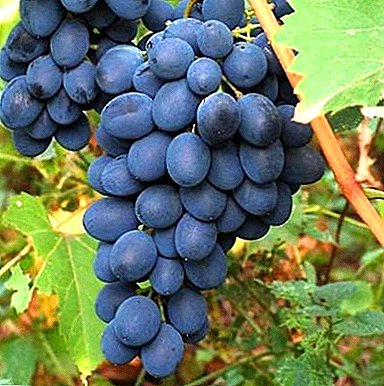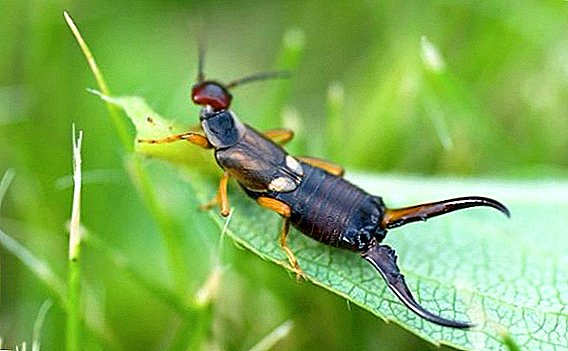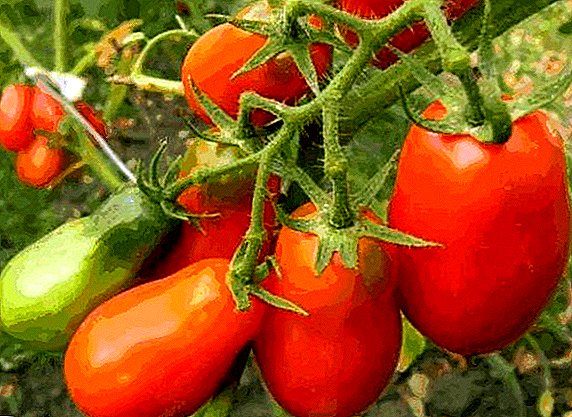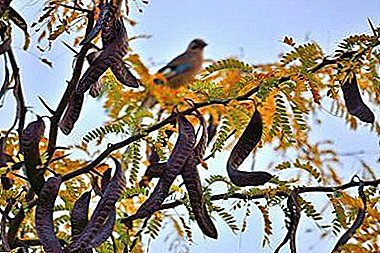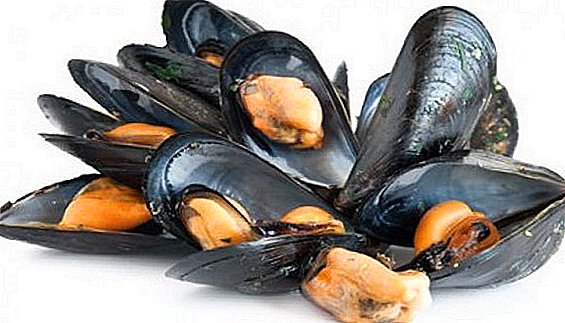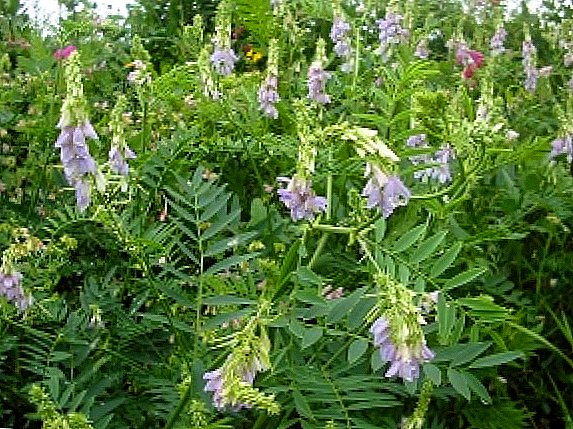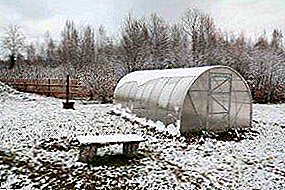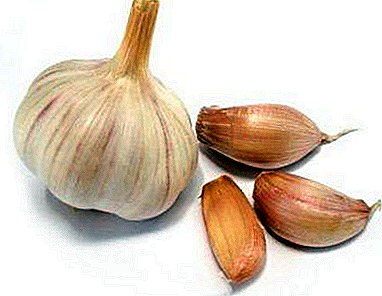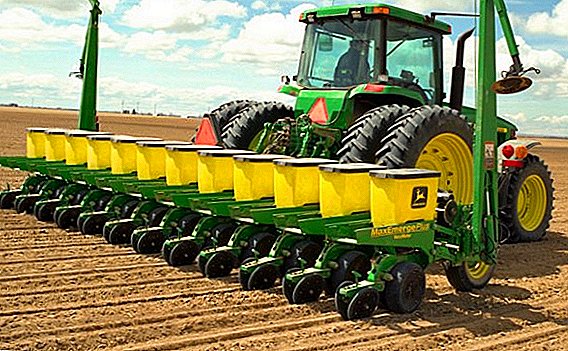
Scientific and technical progress, good, is not worth it. It provides the ability to automate human labor by completing work faster and better. High technologies do not disregard and agrarian industry. In order to improve performance, today produce a huge amount of agricultural mechanisms and seeders - This is a vivid example. What is seeding machines?
Description and Purpose
A seeder is a device that is massively used for sowing seeds of various plants in the ground. In most cases, the machine is also used to spread fertilizers or other organic matter over large areas of crops.

It is modern alternative to spreading grains by hand or sieve, which could significantly increase the yield. The main advantage of the mechanism is that the seeds are distributed evenly and immediately at the required depth. The quality of the process is not influenced in any way by the weather conditions or the banal gusts of wind, which, when sowing by hand, spread the planting material to adjacent areas. The newest models also feature pneumatic precision. The classification of drills, as well as their brands and the general structure of work, will be considered further.
Did you know? The first iron planter was invented in China in the II century BC, but in Europe such a device was patented only in the XVI century AD and was improved during the British agricultural revolution.
An important characteristic of each seeding machine is the width of the grip. Usually this feature will be known immediately, as it is indicated in the brand of the device (for example, C3 - 3.5). This means that the seeder is a grain one and has a width of 3.5 meters. Thus, only after seeing the marking of the mechanism, one can understand that it is intended for grain crops and each time with its apparatus it will process a section of 3.5 meters in width. From this it is easy to calculate what area of sowing can be covered by traveling once from one end of the garden to the other. Accordingly, if you know the approximate speed of the movement of the machine, it is completely easy to count the time that needs to be spent on sowing.

Design and principle of operation
To understand what a seeder is, it is worth considering its design and principle of operation. This is a machine that consists of the following parts:
- an apparatus with a seed tube for sowing grain, which doses and feeds them;
- several boxes, cans or other containers with agitators (help to better seed flow) for storing planting material;
- a device (for example, a plow) for the formation of grooves in the soil, where seeds will subsequently enter;
- the mechanism for filling the grooves with the soil after the grains hit them and leveling the soil.

In machines designed for seed and fertilizer (tuk) at the same time, grain boxes are more often found in the front of the mechanism, and for tuk in the back. A modern seeder moves across the field with a tractor at a speed of about 13 km / h.
Did you know? In the countries of the former Soviet Union, not only the seeder is popular, but also the cultivator-seeder, the peculiarity of which is the ability to perform sowing on untreated soil (stubble).
After studying the design, the principle of operation of the drill becomes clear: the machine, making movement around the garden, makes grooves, sows planting material to the required depth and distance, mineral fertilizer (if needed), and as a result, it piles up the grooves with soil, making it uniform. Seeds are poured into the seed tube due to the rotation of the shafts, and the ends of the seed tubes meet with the plow. This procedure requires a minimum amount of time and effort on the part of the person. The owner of the field, in this case, only controls the health of the machine.

Planter planting seeders can be mechanical and pneumatic. Earlier it was mentioned special accuracy, which is owned by some copies of sowing machines. This is nothing but a miracle of technology, which is called the precision planter. Such a device is a universal mechanism of tilled type; it is equipped with a pneumatic system for seeding. Its advantages are:
- The optimal gap between the planting material.
- Maximum field quality.
- Clear recess check.
- Facilitate future harvesting.
Kinds
Sowing machines are fairly common devices around the world, so there are many types of devices that have certain performance characteristics. In general, these mechanisms can be divided into universal and special. The first type can be used for sowing any grains: wheat, legumes, or maize. Specials are special for each type of crop. Consider the main types of machines and their description. Seed drills are usually classified according to the type of traction, seeding method and culture (according to specialization).

By sowing method
The most popular is the specification for the method of sowing (planting), which includes the following types of seeders:

- square-nest is a type used to place a group of grains at the top of squares / rectangles;
- Private - a device for sowing a culture near / tape without gaps;
- nesting - a mechanism for spreading the nest of seeds in each row / tape;
- scatter - a machine for the chaotic sowing of grains over the area of the entire field (for example, grass);
- dotted (single-grain) is a species intended for a wide arrangement of seeds with the same, defined distance between crops.
Important! The method of sowing machine is chosen, taking into account the particular culture, the size of the sown area and the type of soil (its composition, fertility and readiness for cultivation).
By kind of traction
The classification of machines according to the type of traction divides them, depending on the mechanism that drives the seeder to move to perform sowing:
- tractor (mounted / trailed) - a mechanism that is controlled by a tractor, respectively, develops the highest speed of movement across the field;
- Mounted - a machine that is attached to the horse harness with the help of special cables;
- manual - seeder, which moves with the help of human effort.
- self-propelled chassis - fully autonomous model.

Usually the sowing mechanism is attached to the tractor, sometimes to a horse cart. Mass produced, of course, tractor species. Today it is extremely rare to find completely manual devices, this is practically a museum piece, since their operation is very difficult and inefficient.
By culture
As already indicated earlier, depending on the type of culture being sown, appropriate equipment is also selected. These machines are characterized by specific components of their designs, adapted to a particular type of culture, which must be grown. This specialization is made in this way:
- grain;
- grain-herbal;
- grain-fat;
- grain and vegetable;
- cotton;
- flaxseed;
Learn more about the possibilities and advantages of using tractors in agriculture: MTZ-892, MTZ-80, MTZ-1221, T-150, Kirovets K-9000, T-25,
Features of operation
Modern sowing mechanisms have a peculiarity, which consists in their use not only in the traditional system of soil cultivation, but also in the "preservative". The first type of processing is plowing. The second type, which is also called the minimum, is characterized by a surrender impact with constant loosening of the soil. The universal seeders also have an interesting quality of operation. Each grain sowing machine is in a separate box. At its bottom there is a valve for spilling planting material. The width of this valve is easily adjustable with a bolt, depending on the grain size, it can be from 0 to 53 centimeters.
Important! If the manufacturer positions its brand as a universal seeder, then the capacity for seeds must necessarily be with an adjustable valve, otherwise the grains will get stuck or, on the contrary, spill out in large quantities.
The following slot sizes should be used, depending on the seed:
- small - 0.5-2 mm;
- large - 7-10 mm.

The depth of the grooves in the soil can also be adjusted with the help of special springs or other mechanisms, because different types of crops differ in their seeding depth requirements. Most of the seeders are equipped with a special automatic signaling device that controls the process. For long-term operation, experienced farmers advise choosing planters with tanks for grain made of fiberglass. This material will last much longer you than the conventional resin, since it is not afraid of cold and ultraviolet rays can not be strain and not react with the chemicals.
value of machinery for seeding varies over a wide range, so choose the drills better criterion optimal ratio "price-quality".



